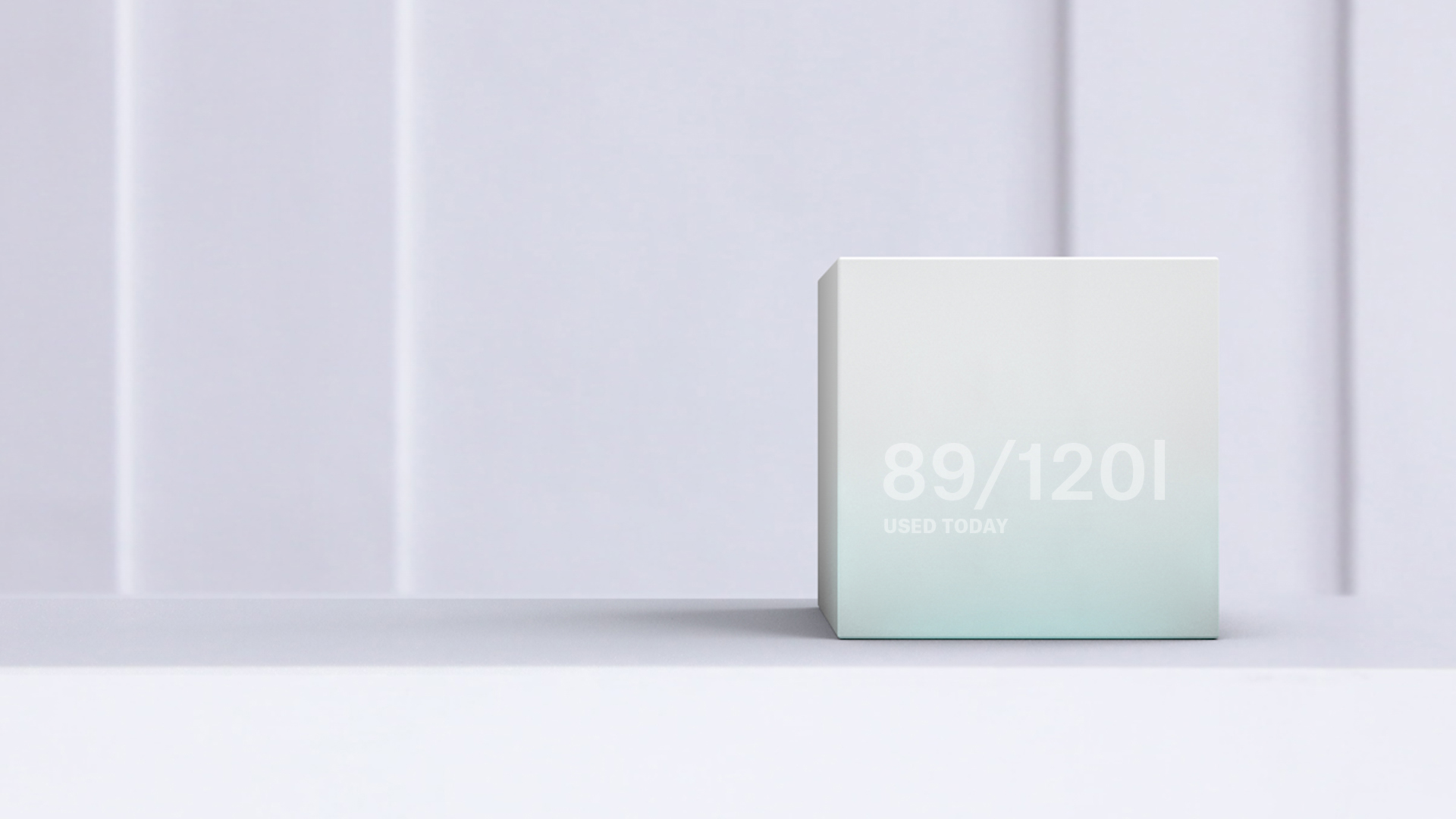
Motivation Concept
Impulse — “wise” home system and the role of motivation
Sustainable design and circular design are terms which receive broad attention. But how can we, as designer
tackle the lack of environmental awareness? Shall we trust in the development of environment friendly products
and technologies or is it time to promote awareness creation, information and sensitisation? This question was
a crucial part of this project...
Impulse is a monitoring system for resources used in private or public spaces. In contrast to conventional
smart home devices Impulse addresses focus on behaviour change of the user. The aim is to visualize and
communicate the consumption of water, electricity or other resources in a comprehensible manner.
Most traditional smart home devices often create a comfort zone around the user whereas Impulse motivates
and stimulates for a more attentive consumption in everyday life.
Impulse displays information about various consumption parameters.
During this project, it was examined whether it is possible to achieve a lasting behavior
change through information and motivation to help the environment and your surrounding.
Behind this project is the conviction that the linking of these parameters is necessary in
order to stimulate a change in behaviour. Knowledge about a particular state must involve a precise
action. The wall, which must be defeated, is the motivation
While researching we realized that people already have good knowledge about the
environment. They mostly know what behaviour is rather bad or good, but often the most
important part is missing: The Motivation to care and act. We studied intrinsic and extrinsic
motivation, at gamification including reward aspects and different motivation models
(e.g. Maslow pyramid) to understand the issue.
Motivation
After we realised that Motivation is the key to gain real behavior change we focused
on the outcome of this project. We looked into the water usage of family homes and recognized
that there was one major insight: people don't really know how much water they are actually
using, when they take showers, use the tap or cook. That was the point where we started Impulse, a
product, wich indicates your water behavior through color in real time. To add more value,
we gave the cube a second inforamtation layer with additional informations about your water
usage. To enter this second layer you need to pick up the cube and it will display further
information on its sides as shown below.
Second layer states
Visualization
In order to save water the user needs to understand his own usage. Therefore it has to be presented
in a visual manner and should arouse interest for the topic. Not the technology, but the translation
from measured values into a comprehensive visualization was a key factor.
Integration
The product gives feedback about ressource consumption in the easiest way. Additionally it's aesthetically
pleasing and is designed to integrate itself seamlessly into the living space. It only comes to the front
as soon as it is necessary to convey feedback or information.
Human Design
Human Design
The device’s technology should not be visible. Technology can work deterrent on humans and distract from
the actual intention. The product design is sharply reduced and works without a conventional screen. Tangible
events are intuitive and “human”.
Team
Tebeya Leicht
Florian Deitermann
Simon Lutter
lectured by Prof. Jörg Beck
Project
Invention Design
3rd Semester Winter 2016/17
HfG Schwaebisch Gmuend


